- American Locomotive Company (6)
- Amtrak (33)
- ANDERMATT (0)
- Atchison, Topeka & Santa Fe (316)
- Atlantic Coast Line (2)
- Austrian Erzbergbahn (1)
- BALDWIN (1)
- BALDWIN OR-AMER (1)
- Baltimore & Ohio (81)
- Bangor & Aroostook Railroad (3)
- Belt Railway of Chicago (0)
- Benson (1)
- BHP Billiton (0)
- BOOTH KELLEY (2)
- Borden's (3)
- Boston & Albany (5)
- Boston & Maine (12)
- BOSTON EL (2)
- British Columbia Railway (6)
- BRITISH RAIL (1)
- Burlington Northern (21)
- Burlington Northern Santa Fe (4)
- C&S/FW&D (1)
- CA-ZEPH (23)
- CADDO RIVER (2)
- CALIFORNIA NORTHERN RAILROAD (0)
- Canadian National (52)
- Canadian Pacific Rlwy (47)
- Casper, South Fork & Eastern (1)
- CASS SCENIC RR (1)
- CB&CNS (1)
- CBQ/DRGW/WP (4)
- CEMEX (0)
- Central New Jersey (4)
- Central of Georgia (2)
- Central Vermont (0)
- CGW (4)
- Chemins de fer de l'État (0)
- Chesapeake & Ohio (118)
- Chessie (0)
- Chicago & Illinois Midland (0)
- Chicago & North Western (37)
- Chicago, Burlington & Quincy (131)
- Chicago, Indianapolis & Louisville (Monon) (1)
- Chicago, Rock Island & Pacific (31)
- CHICAGO-CSL (1)
- Cleveland Union Terminal (0)
- Cleveland, Columbus & Cincinnati Railroad (1)
- CLOVER VALLEY (1)
- CNS&M (1)
- CO MIDLAND (1)
- COLA (4)
- Colorado & Southern (9)
- COLUMBIA & COWLITZ (1)
- CONOCO (3)
- Conrail (16)
- COOS BAY (1)
- Council Bluffs Railway (0)
- CP/UP (3)
- CRI&P/SP (3)
- CROWN (1)
- CROWN WILLAMETTE / SOUTHWEST LUMBER MILLS (1)
- CRR (1)
- CSS&SB (3)
- CSX Transportation (3)
- Dampfbahn Furka-Bergstrecke (0)
- Delaware & Hudson (7)
- Delaware, Lackawanna and Western (3)
- Denver & Rio Grande Western (76)
- Denver & Salt Lake (1)
- Denver South Park & Pacific (1)
- Department of Defense (0)
- Detroit & Toledo Shore Line (0)
- Deutsche Bundesbahn (9)
- DEUTSCHE REICHSBAHN (9)
- Diesel Demo Units (2)
- Duluth, Missabe & Iron Range (56)
- Duluth, Missabe & Northern (2)
HO Brass Model - W&R NP Northern Pacific A-3 4-8-4 Passenger Gray #2663 - F/P - 1993 Run - Samhongsa

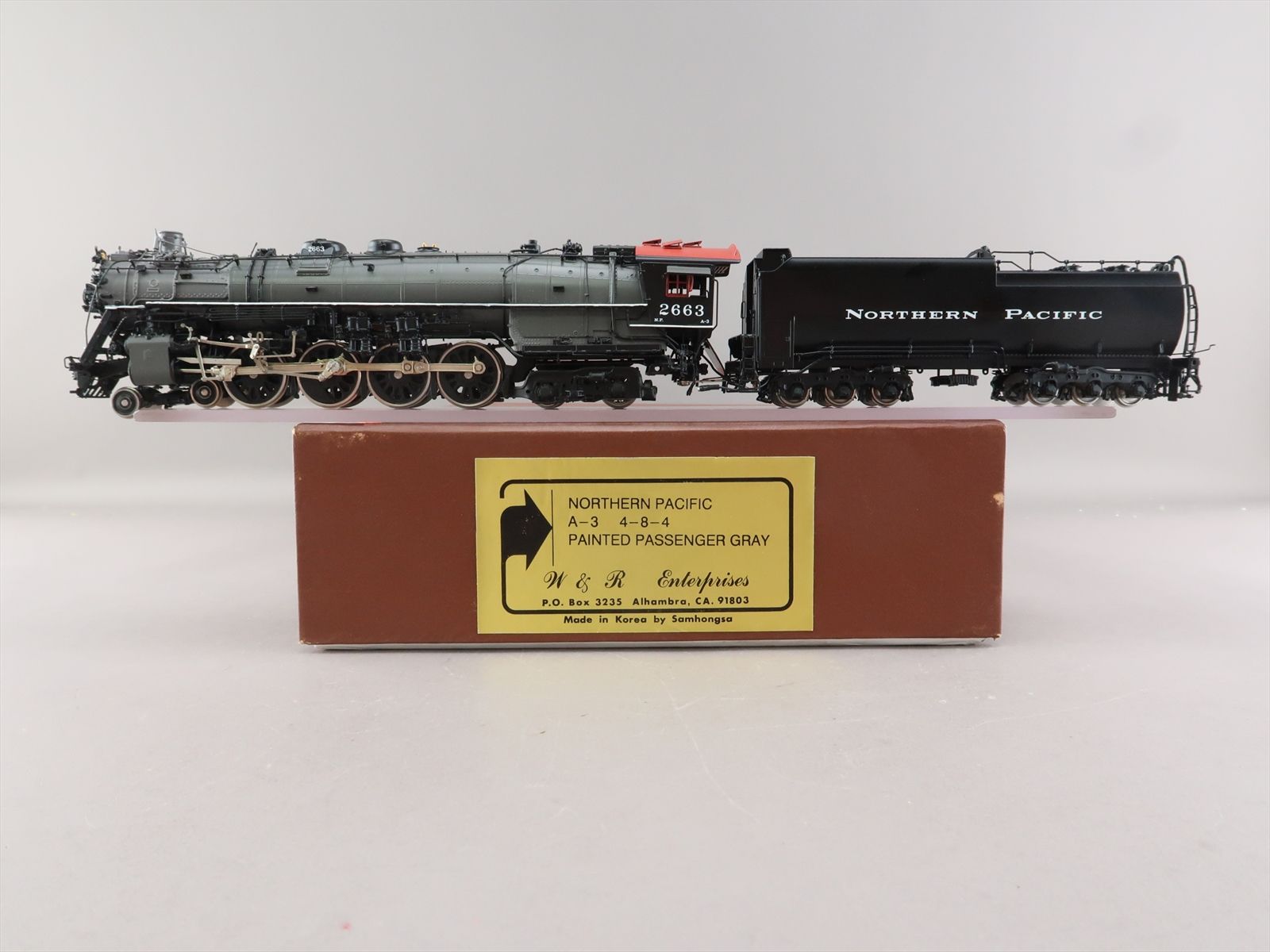

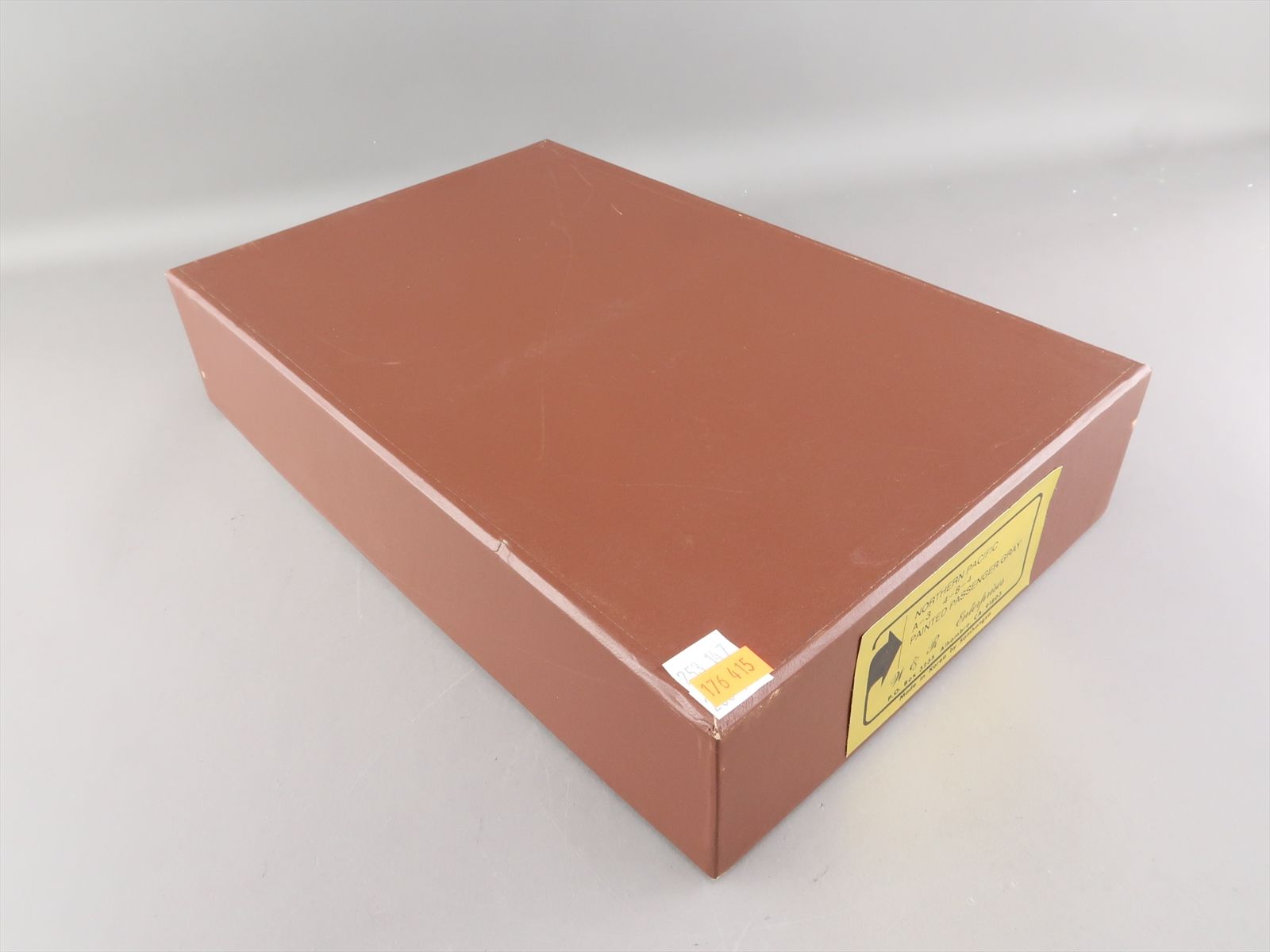

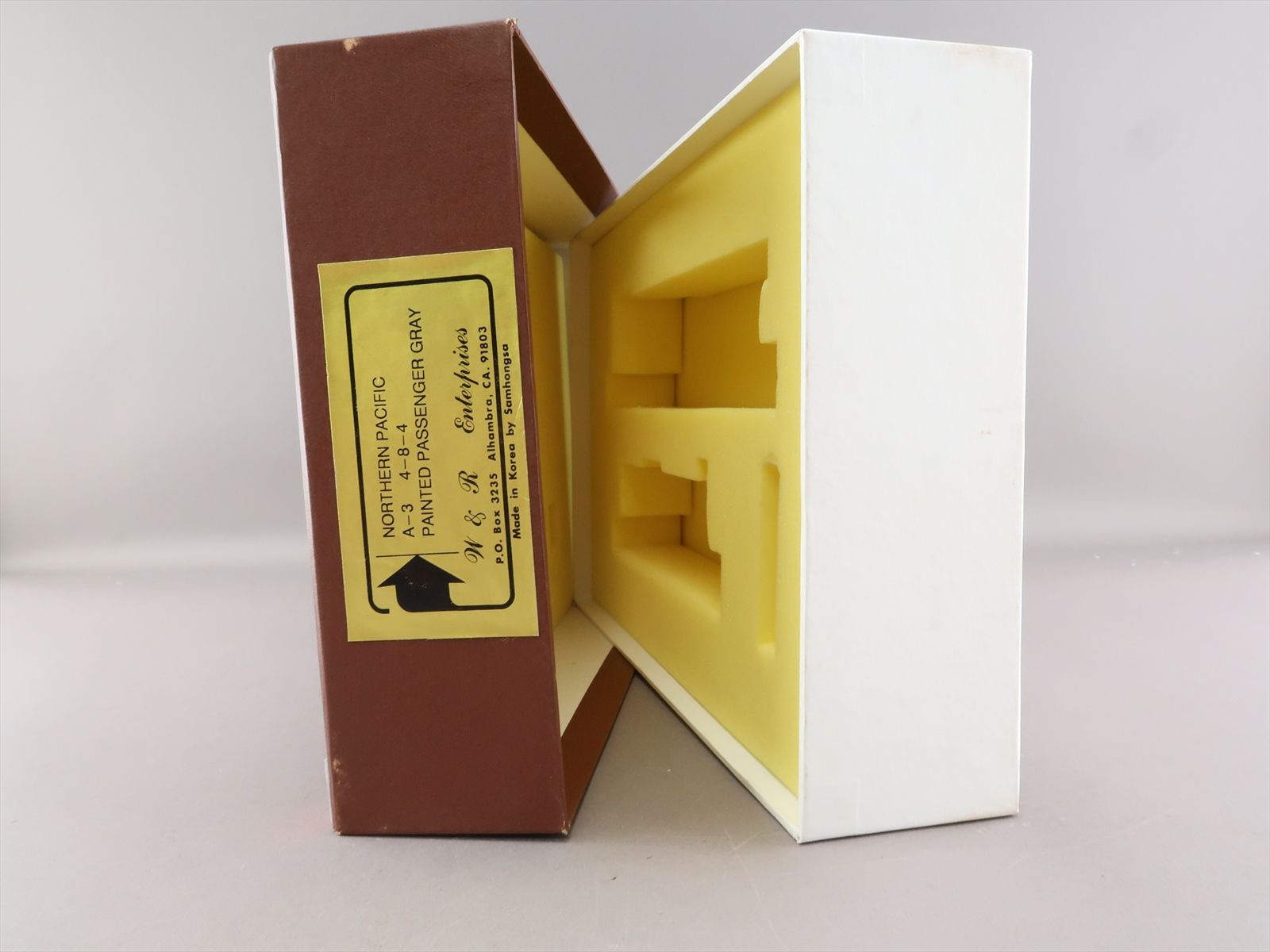
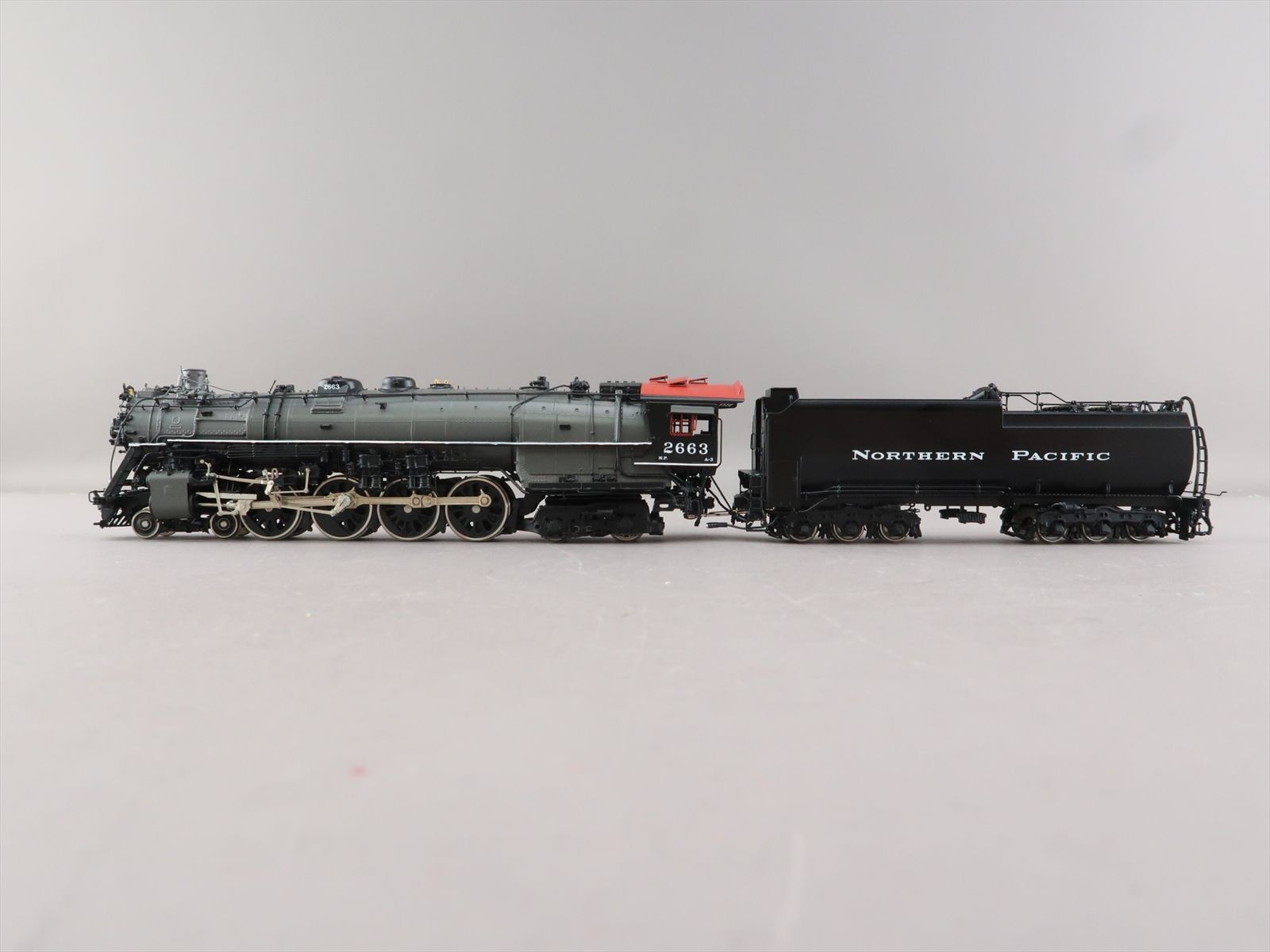
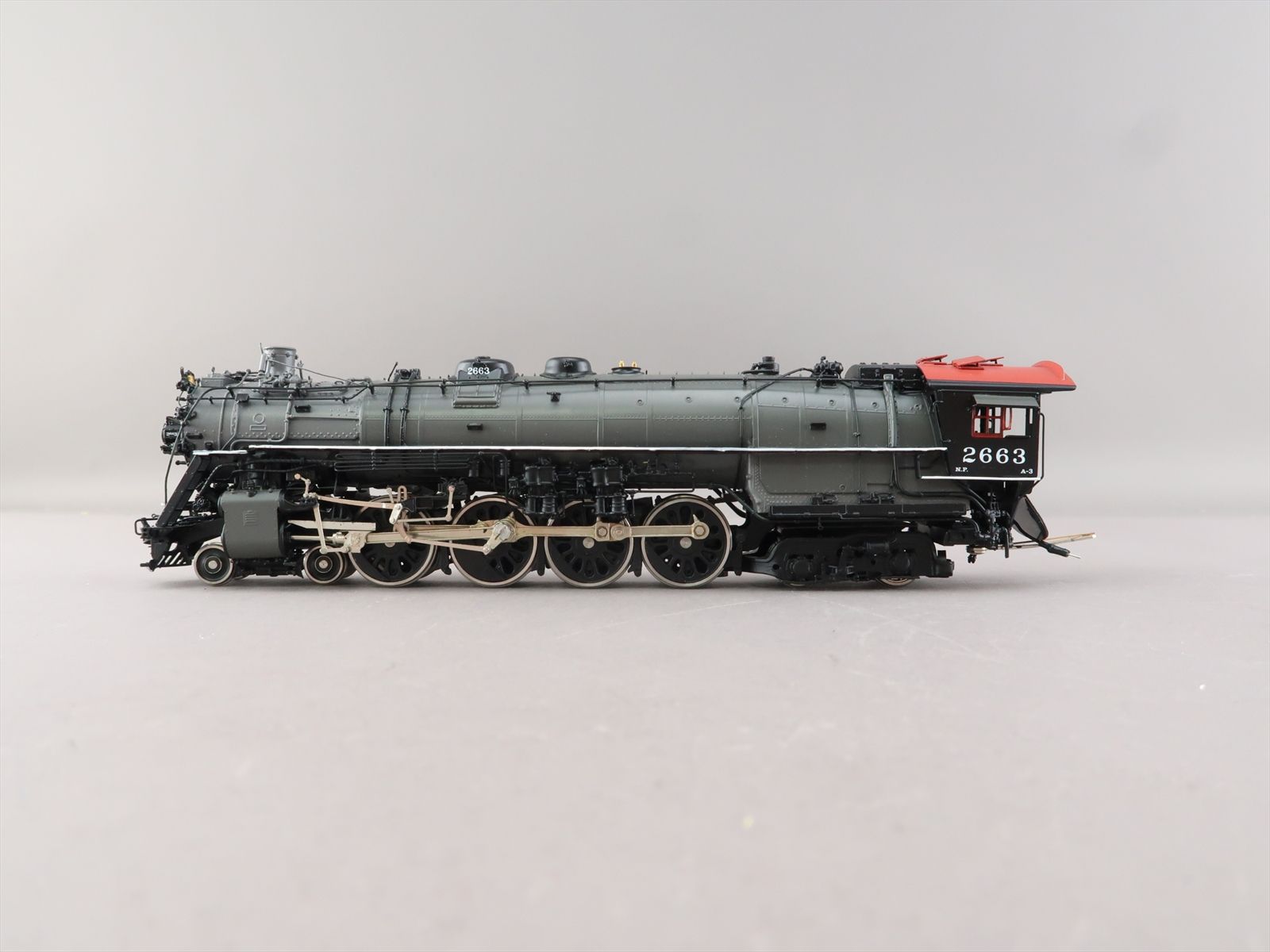
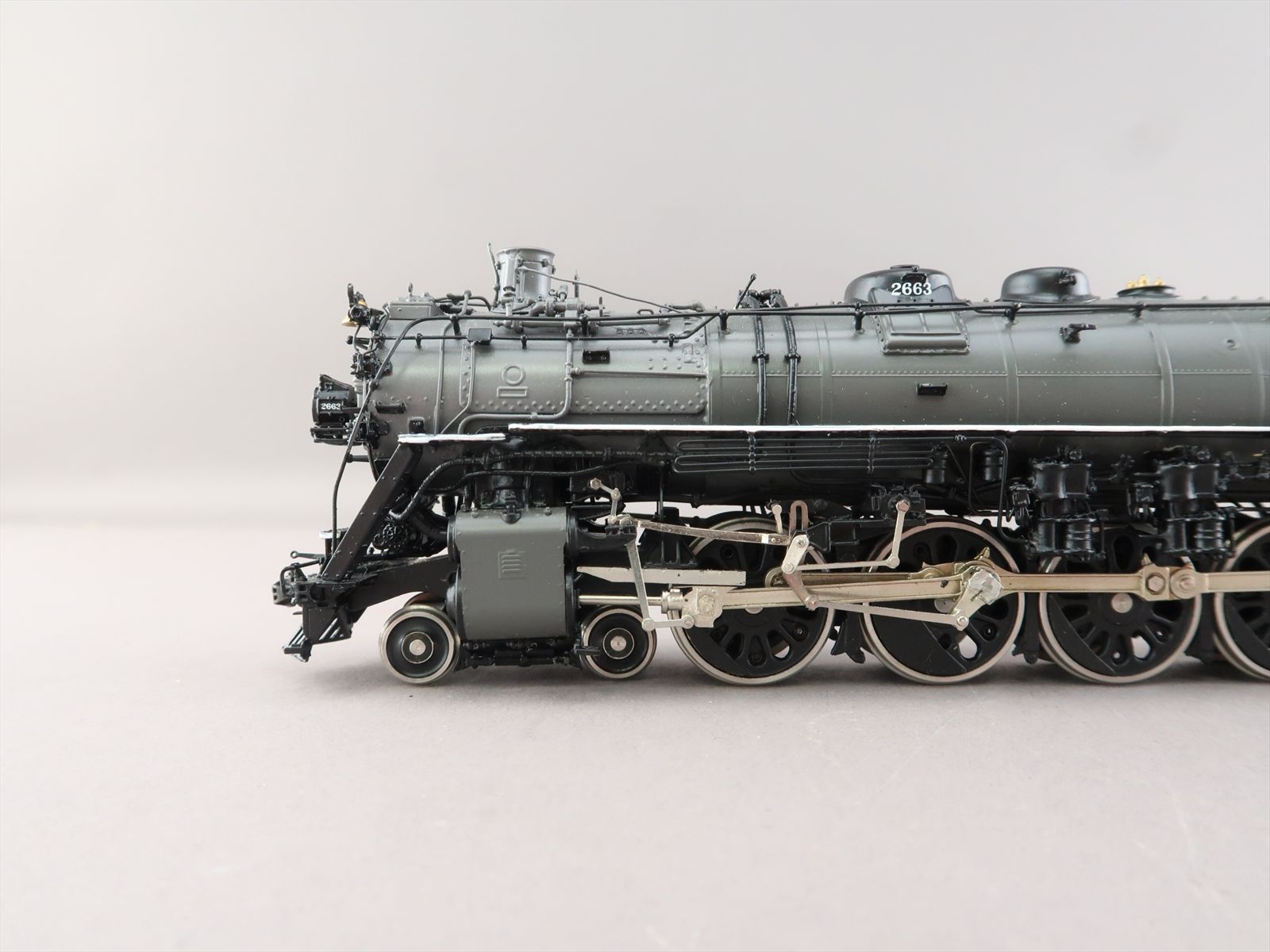
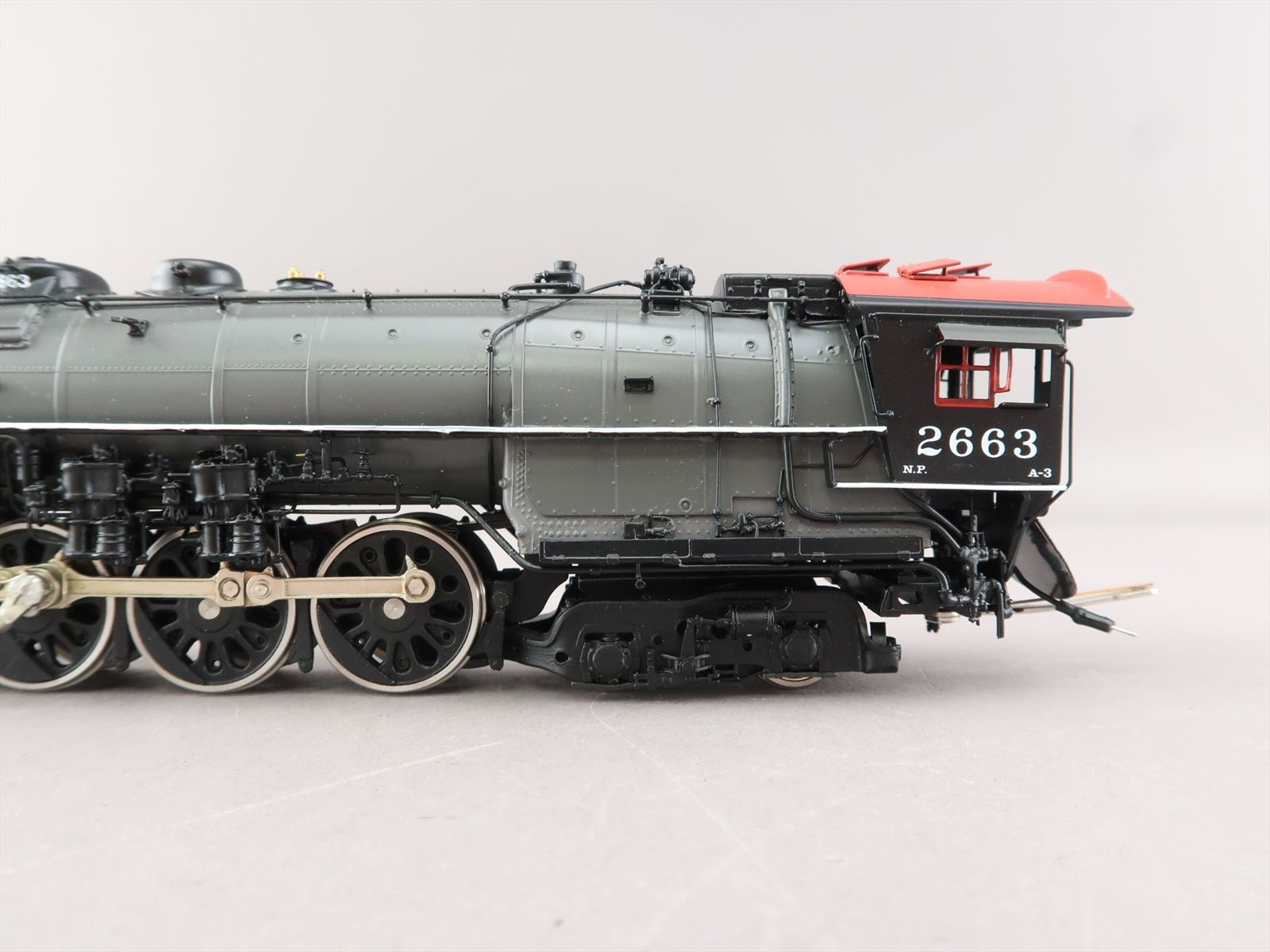



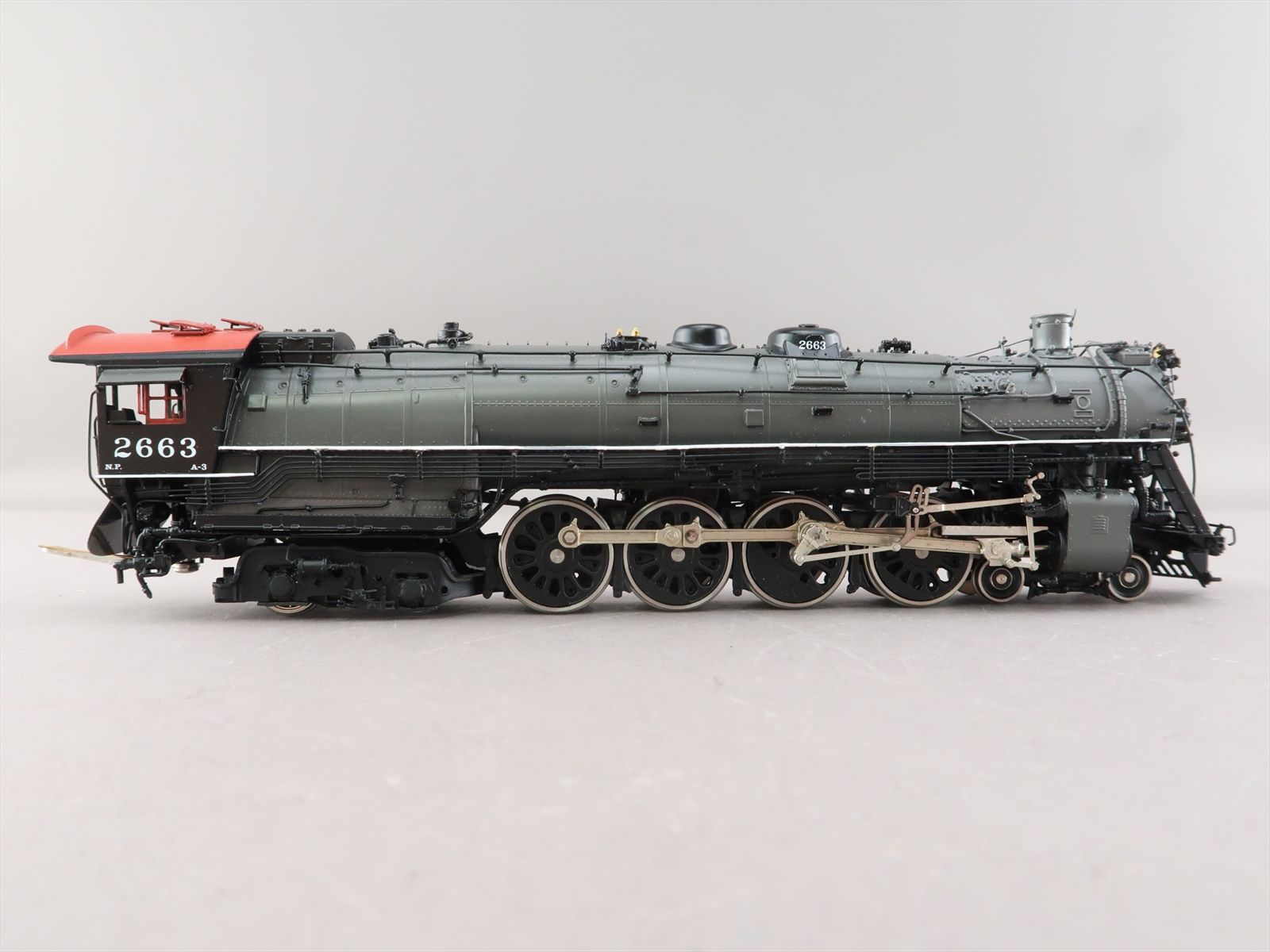
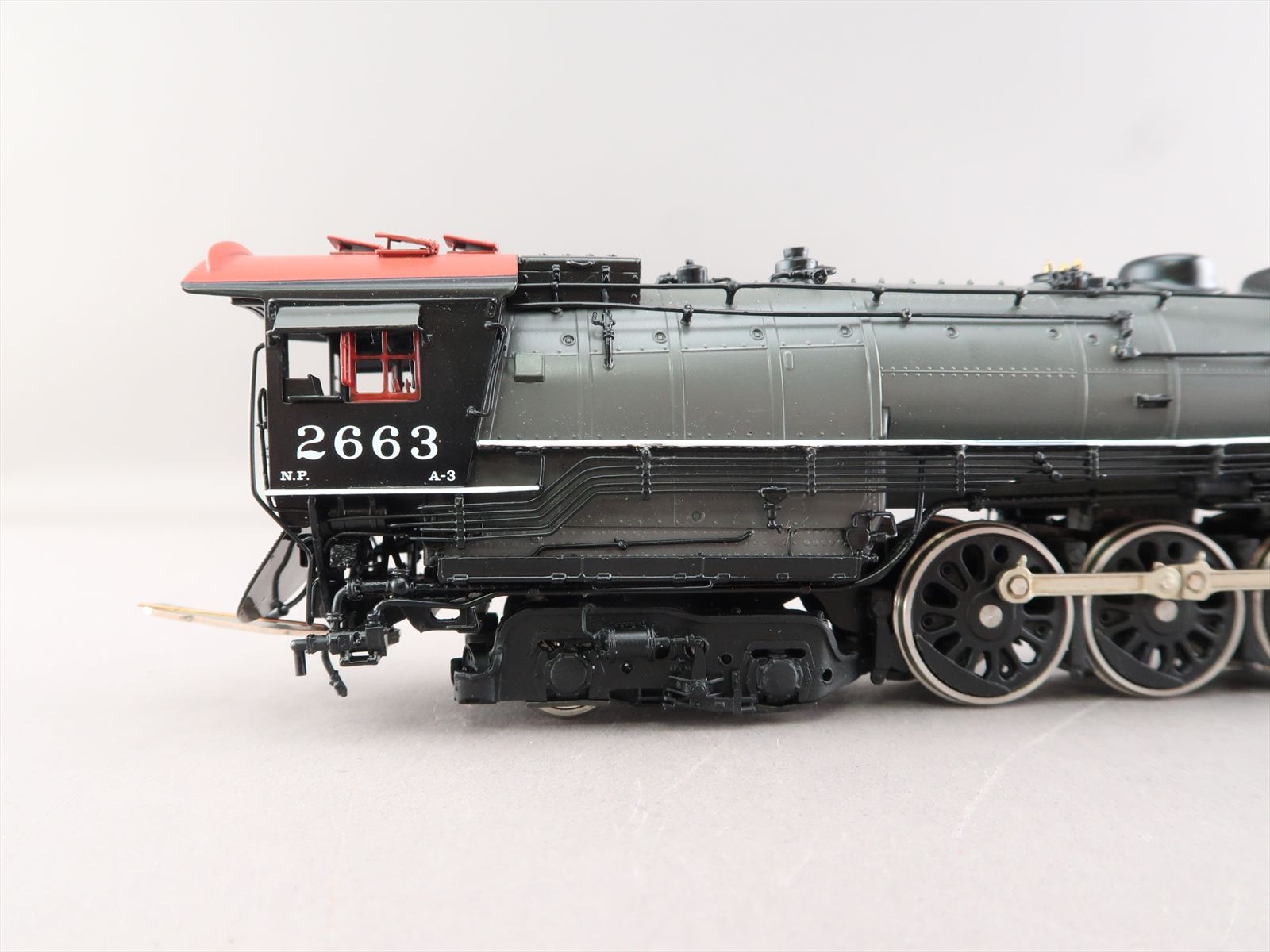
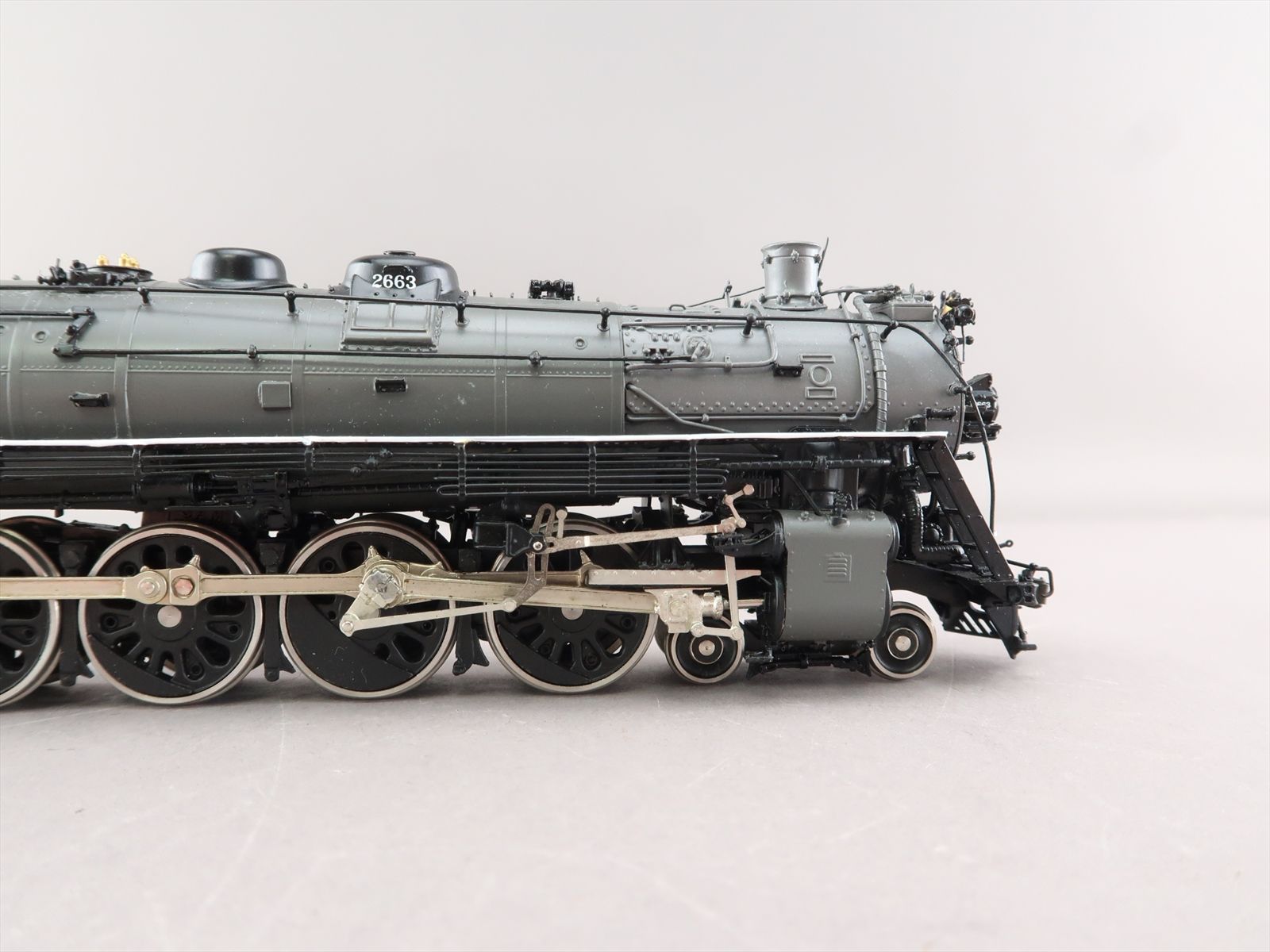


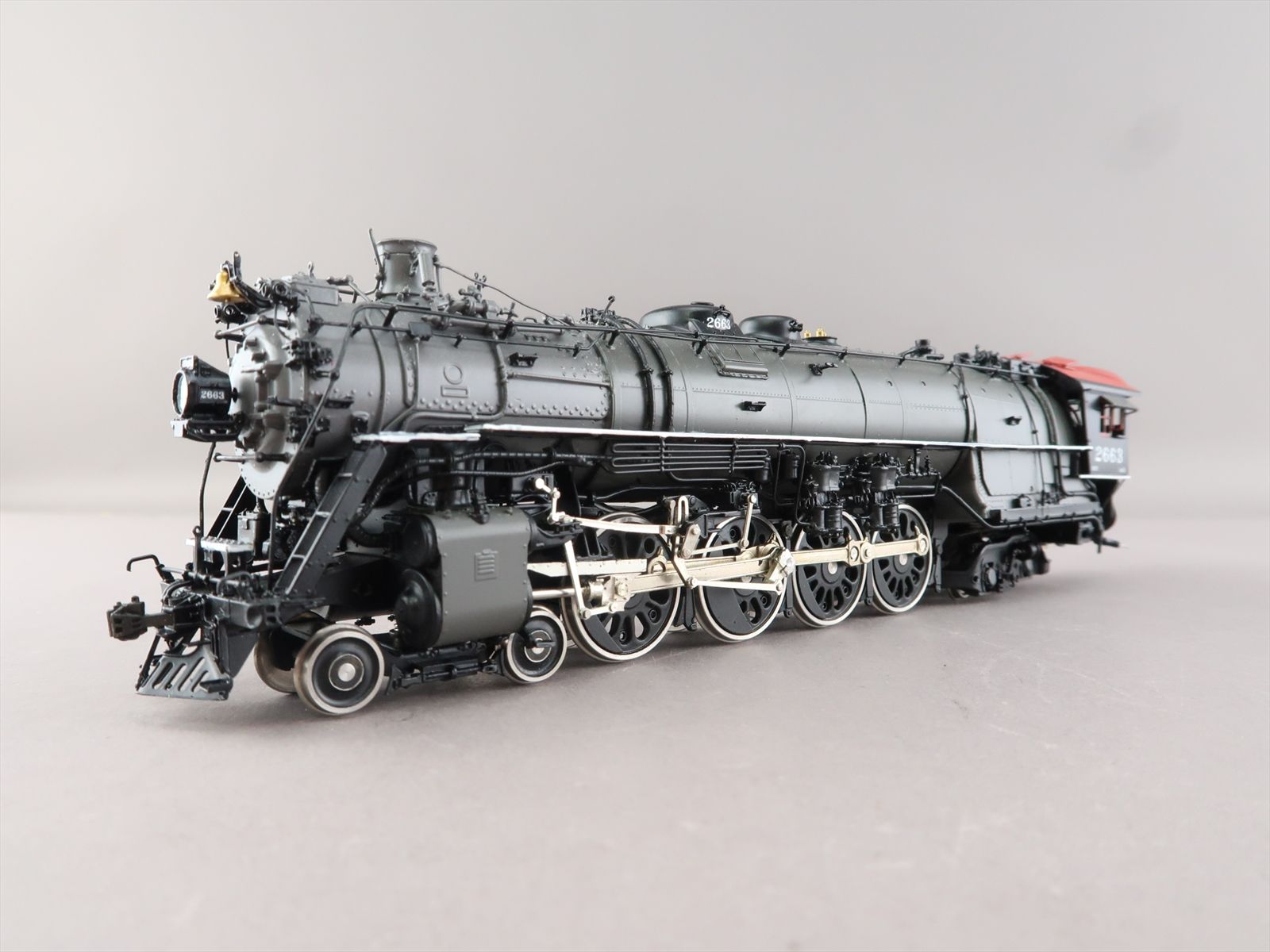

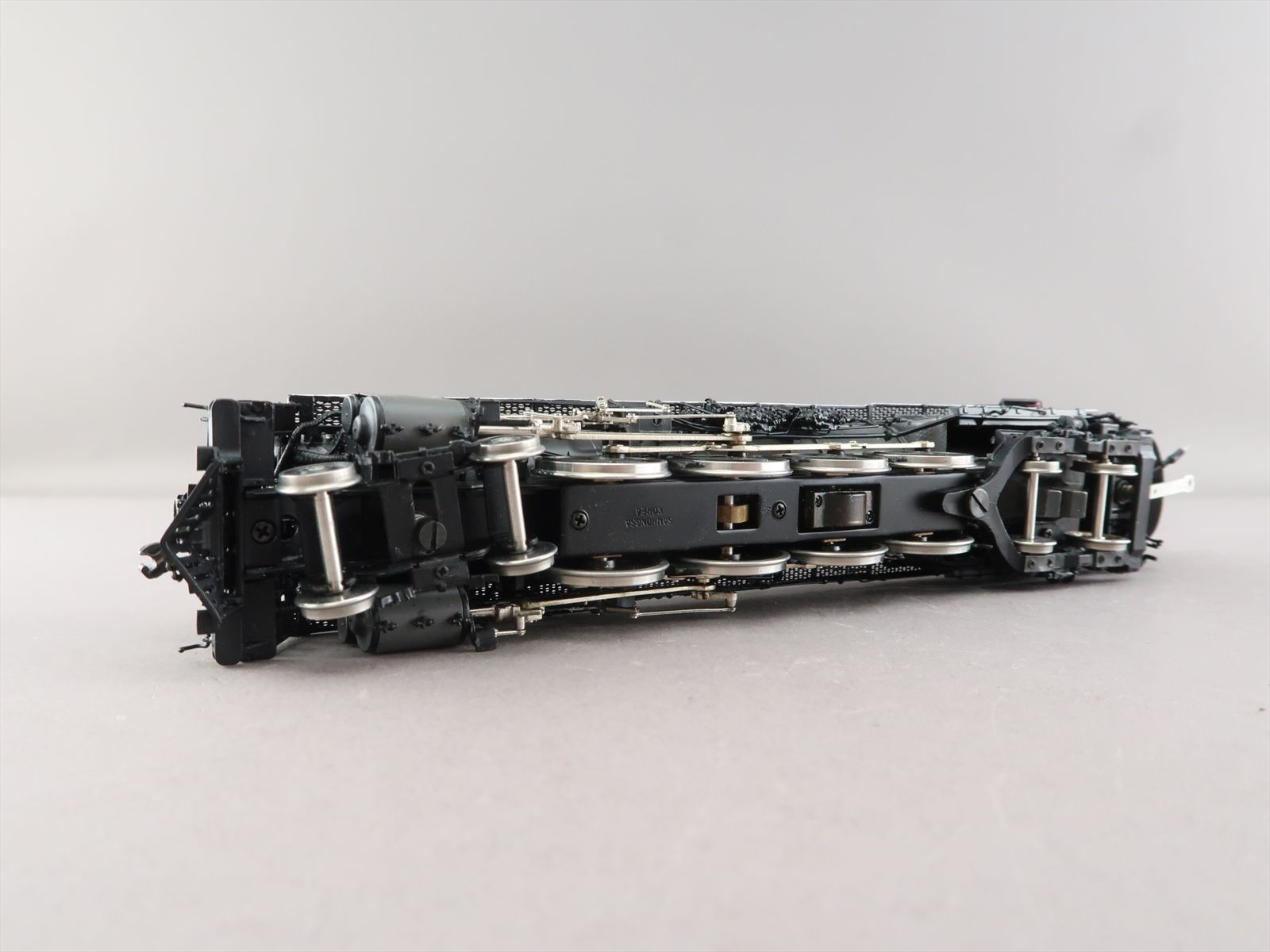




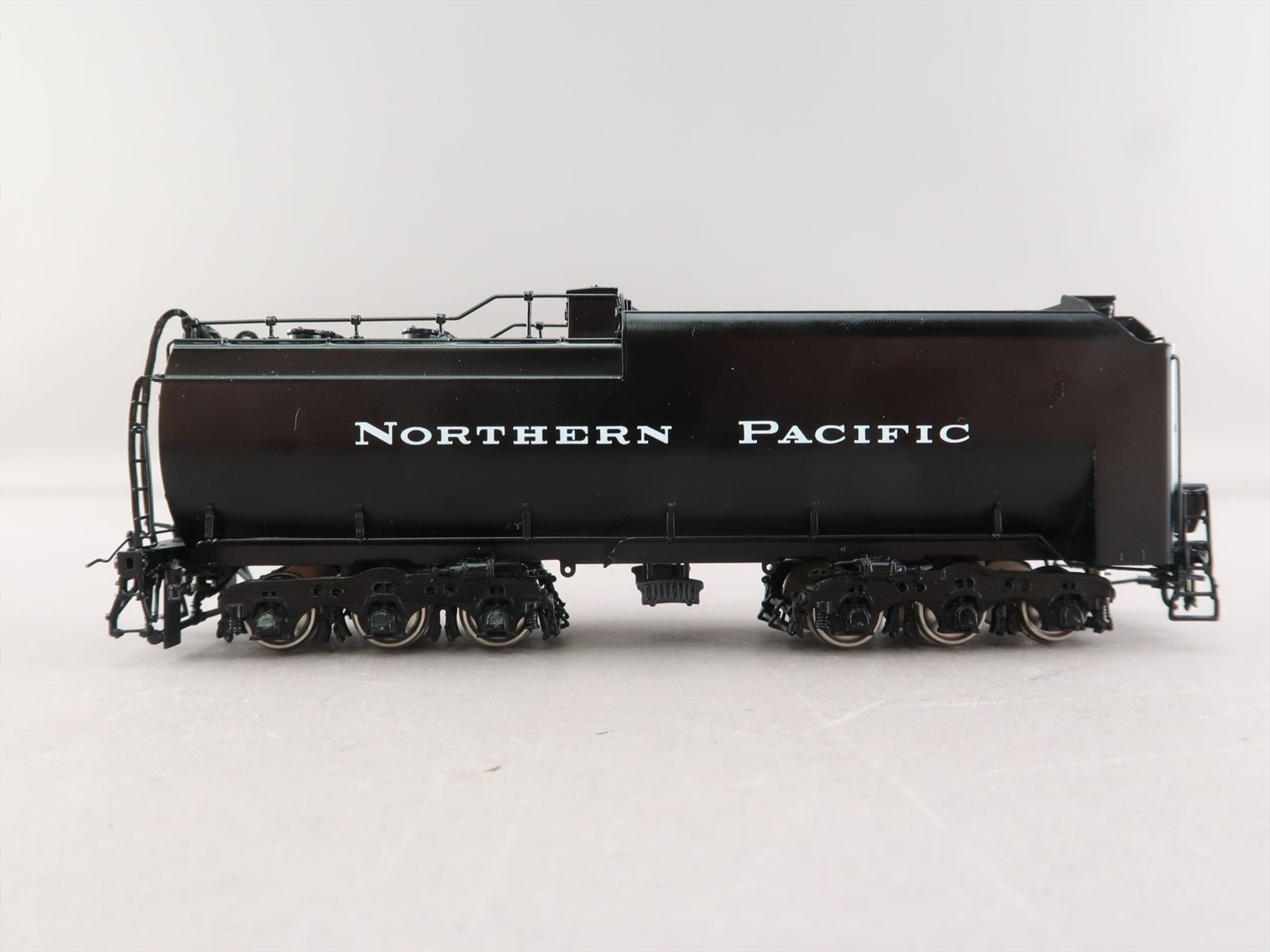


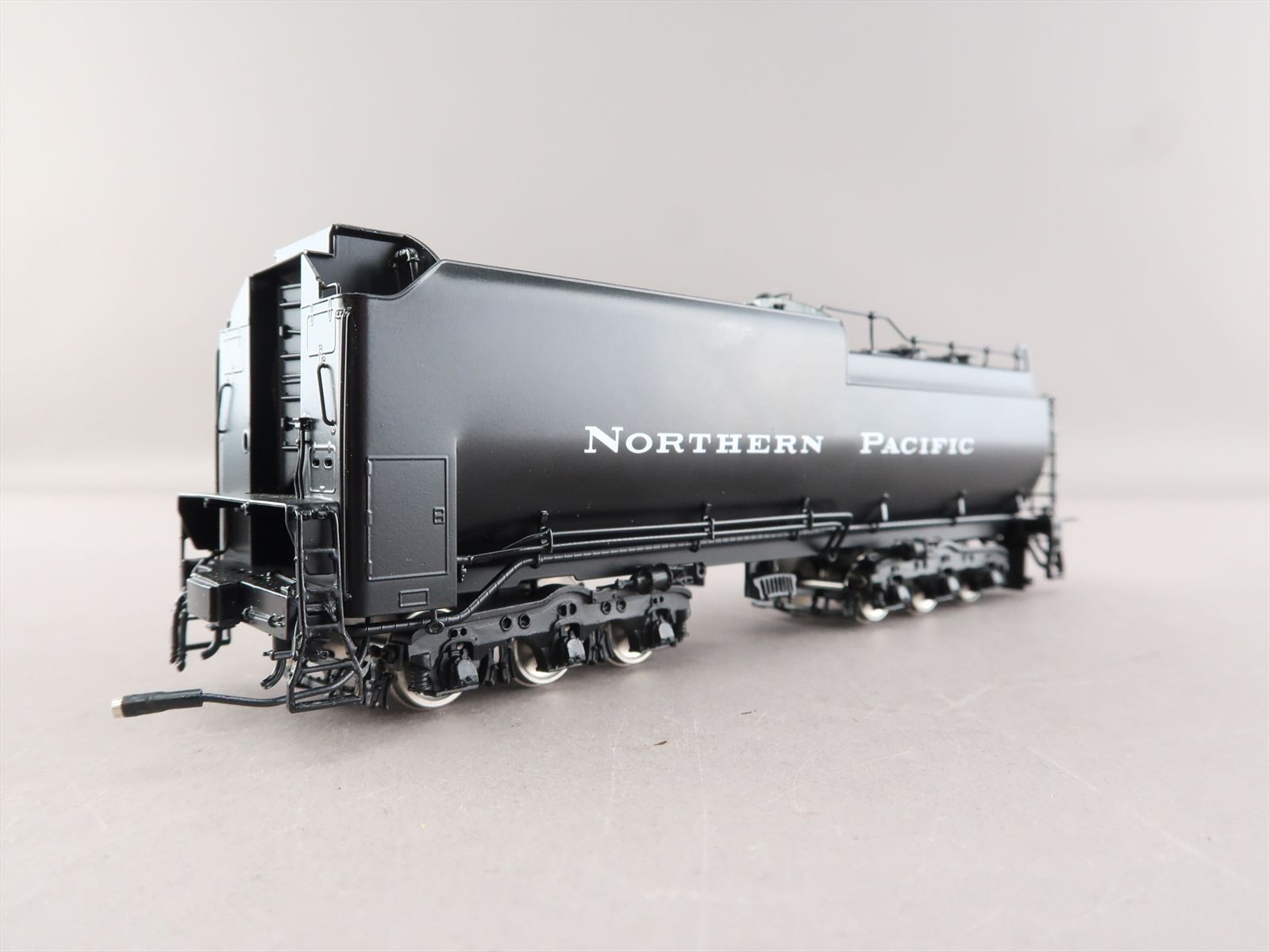
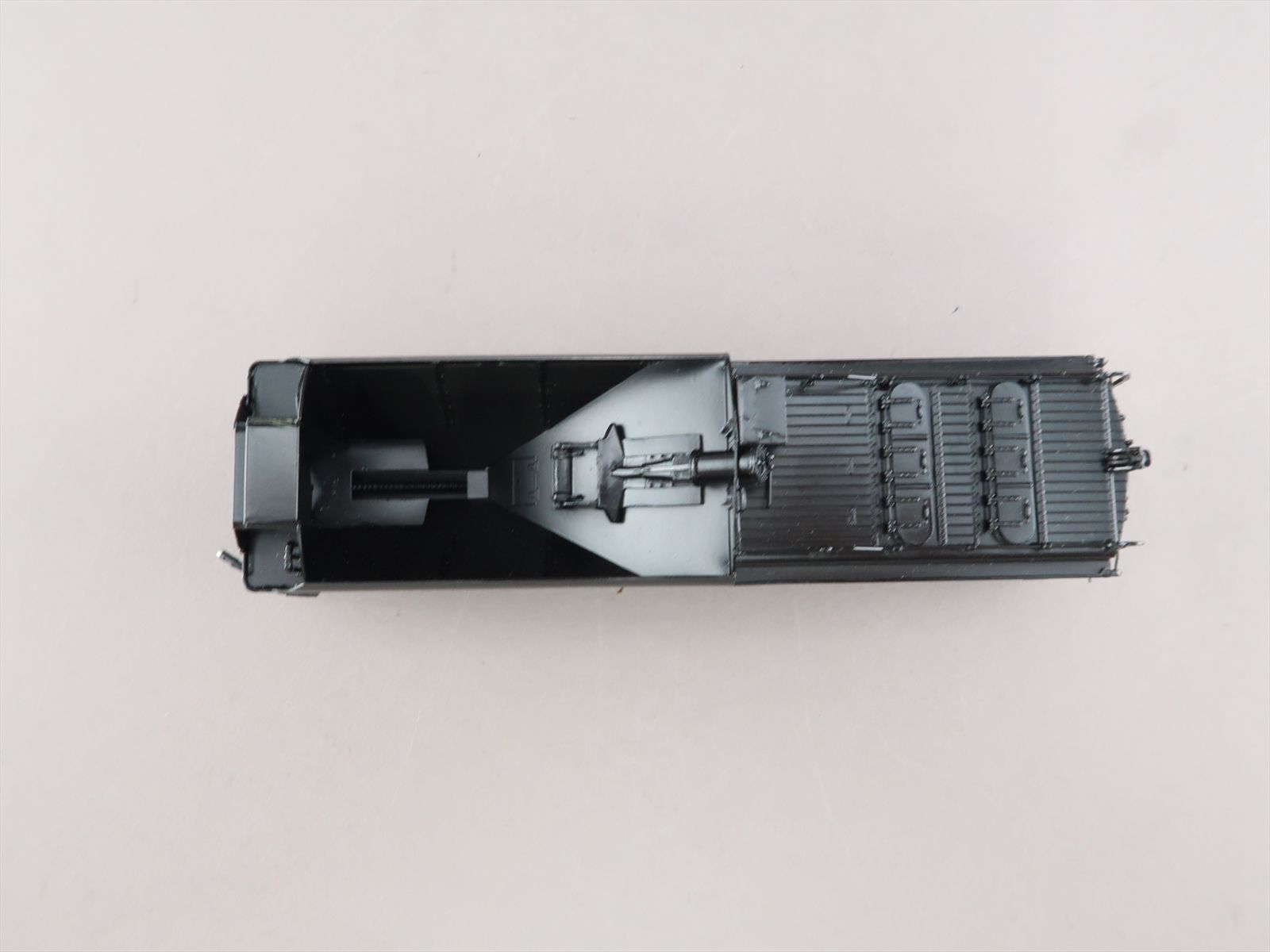
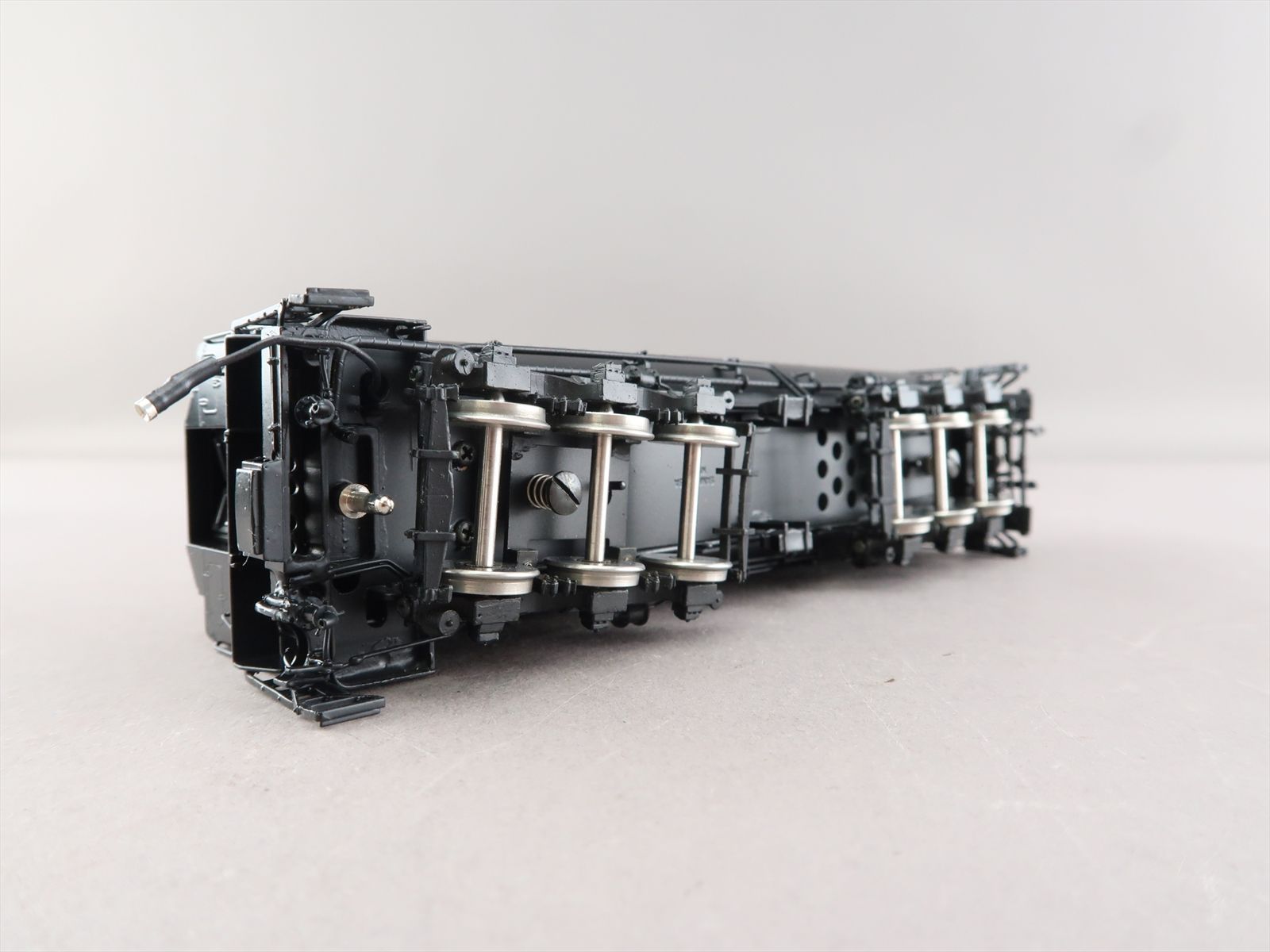
Model Attributes
- Running Noise (1 = low, 10 = high): 4
- Motor Type: Can
- Window Glazing: N/A
- In-Cab / Interior Detail: Yes
- Lights: Directional
- DCC: N/A
- DCC System: N/A
- Sound: N/A
Please be sure to check out the photos.
Notes:
INFO: Model grading is shown in the "GRADING" tab
SHIPPING: Please note that shipping prices are subject to change, especially when and if, items (1) are being shipped outside of the U.S., (2) are large, and / or, (3) are combined with multiple other items for shipment. The price for shipping that you see at checkout is our best estimate; the actual cost may need to be adjusted depending on the circumstances. We will contact you if an adjustment needs to be made.
SOME INTERESTING "NORTHERN" HISTORY:
The 4-8-4 type was first used by the NP and is consequently most commonly known as a Northern.
It arrived on the locomotive scene at a time when nearly all the important design improvements had already been proven, such as the superheater, mechanical stoker, outside valve gear, the Delta trailing truck and the one-piece bed frame of cast steel with integrally cast cylinders, which did much to advance the application of roller bearings on steam locomotives since it gave the strength and rigidity to hold them in correct alignment. In 1930, the Timken Company actually used a 4-8-4 built by ALCO with roller bearings on all axles and called the Timken 1111, to demonstrate the value of their sealed roller bearings over nearly every mainline in the United States. The Timken 1111 was subsequently sold to the NP, where it became NP no. 2626, their sole Class A-1 locomotive.
The big-wheeled 4-8-4 was at home on heavy passenger trains and quite capable of speeds over 100 miles per hour (160 kilometers per hour), but freight was the bread and butter of the railroads and in that service the Northern had limitations. The adhesive weight on a 4-8-4 was limited to about 60% of the engine's weight, not including the dead weight of the tender. Henry Bowen, the Chief Mechanical Engineer of the CPR, from 1928 to 1949, recognized this and, after testing the first two CPR K-1a Northerns introduced by his predecessor, he designed a 2-10-4 Selkirk type using the same boiler. The resulting T-1a Selkirk locomotive had the same number of axles as the Northern, but the driving wheels were reduced from 75 to 63 inches (1,905 to 1,600 millimetres) in diameter, while the additional pair of driving wheels increased the tractive effort by 27%. In a later variant, Bowen added a booster to the trailing truck, enabling the big Selkirk to exert nearly 50% more tractive effort than the similar-sized K-1a Northern.
| 50 | |
| 40 | |
| 35 | |
| 30 | |
| 25 | |
| 20 | |
| 15 | |
| 0 |
| 40 | |
| 35 | |
| 30 | |
| 26 | |
| 22 | |
| 20 | |
| 18 | |
| 16 | |
| 12 | |
| 4 | |
| 0 |
| 10 | |
| 8 | |
| 6 | |
| 4 | |
| 2 | |
| 0 |
| BG-SKU: | 24004 |
| Scale: | HO |
| Importer: | W&R Enterprises |
| Category: | Steam |
| Sub-category: | Non-Articulated |
| Builder: | Samhongsa |
| Road: | Northern Pacific |
| Type: | |
| Description: | A-3 |
| Whyte: | 4-8-4 |
| Year(s): | 1993 |
| Catalog No: | |
| Notes: | FACTORY PAINTED - PASSENGER GRAY, #2666 |
SHOP BY ROAD
- Duluth, Winnipeg & Pacific (0)
- East Broad Top (1)
- EJ&E (2)
- ELK RIVER (2)
- EMD DEMO (9)
- Emmert International (0)
- Erie Lackawanna (5)
- Erie Railroad (23)
- Ferronorte (0)
- Florida East Coast (2)
- Fort Street Union Depot (0)
- Fort Worth & Denver (2)
- Fortescue Metals Group (0)
- FRENCH NATIONAL RAILWAY (1)
- French Prototype Models (0)
- Frisco (St.Louis–San Francisco) (9)
- Fruit Growers Express (1)
- Furka Oberalp Bahn (1)
- Galveston-Houston Electric Railway (3)
- GATC (3)
- GATX (3)
- GBW (1)
- GE (2)
- GE DEMO (2)
- GEORGIA PACIFIC (1)
- German Prototype (0)
- GPEX (7)
- Grand Trunk (0)
- Grand Trunk Western (0)
- Great Northern (409)
- Gulf, Mobile and Ohio (1)
- Hamersley Iron (0)
- HAMMOND (2)
- HASSINGER (2)
- HILLCREST (4)
- HOOD'S (0)
- Illinois Central (10)
- Illinois Central Gulf (0)
- INTERSTATE (2)
- ITS (3)
- Japanese National Railways (1)
- JONES & LAUGHLIN (4)
- Kansas City Mexico & Orient (0)
- Kansas City Southern (20)
- Klickitat Log & Lumber Co. (1)
- KOSMOS (1)
- L&NE (2)
- Lehigh and New England (0)
- Lehigh Valley (4)
- Lima (0)
- LOGGING (12)
- Long Island Railroad (4)
- Louisiana & Arkansas (0)
- Louisville and Nashville (6)
- MA & PA (3)
- MACK (2)
- Maine Central Railroad (4)
- Mammoet (0)
- Marquette Rail (0)
- MassCentral Railway (0)
- MEADOW RIVER (1)
- MERCHANT'S DESPATCH (9)
- MICHIGAN II (1)
- MIDLAND VALLEY (1)
- Milwaukee Rd - CMSTP&P (190)
- MINNEAPOLIS & ST. LOUIS (0)
- Misc. Roads (548)
- Missouri Pacific (25)
- Missouri–Kansas–Texas (4)
- Montana Rail Link (2)
- MRS-L (0)
- National Railway of Mexico (0)
- NCNG (1)
- New Haven (44)
- New Haven / Pennsvylvania (0)
- New York Central (163)
- Nickel Plate Road (37)
- Norfolk & Western (73)
- Norfolk Southern (11)
- Northern Pacific (578)
- NYS&W (2)
- OAKWAY (1)
- Ontario Hydro (0)
- P&LE (1)
- P&WV (1)
- PACIFIC ELECTRIC (3)
- PACIFIC GREAT EASTERN (3)
- PCC (1)
- Penn Central (8)
- Pennsylvania Railroad (1011)
- Pennsylvania Reading Seashore Lines (3)
- PFAUDLER (0)
- PFE (18)
- PHILADELPHIA (1)
- Pilot & Handbuilt Models (0)
- PITTSBURGH (2)
- Potlatch Lumber Company (1)
- PST (1)
- Pullman-Standard (72)
- QNS&L (1)
- Rayonier Inc. (3)
- REA (11)
- Reading Railroad (16)
- Rhatien Railway (Switzerland) (2)
- Richmond, Fredericksburg and Potomac (8)
- Rio Grande Southern (22)
- Rio Tinto (0)
- Rutland (5)
- Sacramento Northern (1)
- SAGINAW LOGGING (4)
- Santa Maria Valley (0)
- SBB (9)
- SBD (1)
- Seaboard Air Line (10)
- Seaboard Coast Line (2)
- SIERRA RR (1)
- Soo Line Railroad (5)
- South Shore Line (0)
- Southern Pacific (517)
- Southern Railway (21)
- Spokane, Portland and Seattle (107)
- SR&RL (13)
- St. Louis Southwestern (8)
- SUGAR PINE (1)
- Swiss Federal Railways (1)
- Swiss Prototype Models (1)
- T&NO (5)
- Texas & Pacific (6)
- Toronto Hamilton & Buffalo (3)
- TROOP (0)
- U.S. Railroad Administration (5)
- Union Pacific (657)
- UNION STREET RAILWAY (2)
- UNION TANK CAR (8)
- United States Army (0)
- US ARMY (2)
- USAX (5)
- UTAH RAILWAY (1)
- Various (7)
- VIA (1)
- VICTORIAN RAILWAYS (1)
- Virginian Railway (24)
- W&A (1)
- Wabash (9)
- Washington & Old Dominion (0)
- WC (3)
- Western Maryland (14)
- Western Pacific (37)
- Westinghouse (5)
- Westside Lumber Co. (1)
- WEYERHAEUSER (6)
- WHITE PASS (1)
- White Pass & Yukon (11)
- WSLC (5)
- Yosemite Valley (9)









